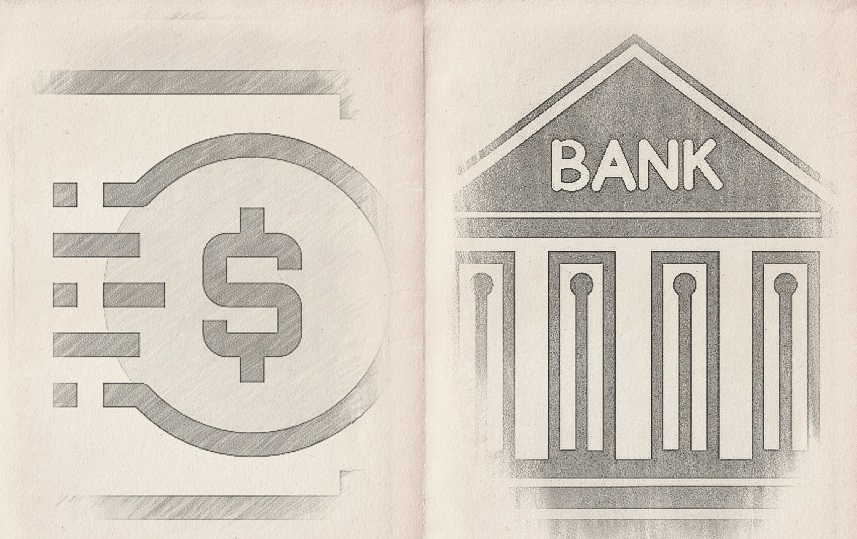
27 March, 2023 04:00

The arrival of technology has brought a significant impact on the financial industry. Banking services have been transformed, and the way customers access their financial services has changed. As well as changes the customers habits. Mobile banking is one of the significant changes that have taken place in the banking industry.
Mobile banking is a convenient and accessible way for customers to access their bank accounts and manage their financial activities. The future of mobile banking looks promising, and it is expected to have a significant impact on customer experience.
In this article, we are going to explore the future of mobile banking and its impact on customer experience.
A brief history of mobile banking
Is Mobile banking being a new concept? No, it’s not! It has been around since the early 2000s. However, it was not until the introduction of smartphones that mobile banking became more accessible and convenient. The first mobile banking service was launched in 1999 by a company called UP. However, the service was not widely adopted, and it failed to gain traction.
The launch of the iPhone in 2007 and Android in 2008 changed the mobile landscape. Smartphones became more affordable, and the mobile internet became more accessible. This led to an increase in mobile banking adoption. Banks started to invest deeply in mobile banking technology to meet the demand for mobile banking services as well as customers need.
Now a day, mobile banking has become an important part of the banking industry. According to Statista, the number of mobile banking users worldwide is expected to reach 1.7 billion by 2024. The growth of mobile banking has been driven by the convenience and accessibility it provides to customers. Customers can access their bank accounts and manage their finances anytime, anywhere.
Future of mobile banking
The future of mobile banking looks promising. Mobile banking technology is developing at a speedy pace, and new features and functionalities are being introduced frequently.
The following are some of the trends that are expected to shape the future of mobile banking.
Biometric validation
Biometric validation is becoming more common in mobile banking. Biometric validation uses physical or behavioral characteristics, such as fingerprints or facial recognition, to verify the identity of customers. Biometric validation is more secure than traditional validation methods, such as passwords and PINs. It also provides a more convenient and seamless user experience.
Payments
Mobile payments are becoming more popular, and it is expected to become a dominant payment method in the future. Customers can use their mobile devices to make payments for goods and services. Mobile payments are fast, secure, and suitable. It disregards the need for customers to carry cash or credit cards.
Artificial intelligence (AI)
Artificial intelligence (AI) is expected to have a significant impact on the future of banking industries as well as mobile banking. AI can be used to initial the banking experience for customers. It can help banks to offer customized services and products to customers based on their financial behavior and preferences. AI can also be used to detect fraud and prevent financial crimes.
Chatbots
Chatbots are becoming more common in mobile banking. Chatbots can provide customers with instant assistance. It can help customers to manage their finances, make transactions, and provide information about products and services. Chatbots can provide a more personalized and engaging customer experience.
Blockchain technology
Blockchain technology is expected to have a significant impact on the future of mobile banking. Blockchain technology can be used to create a more secure and transparent banking system. It can help to reduce the risk of fraud and financial crimes. Blockchain technology can also help to streamline the banking system, making it more efficient and cost-effective.
Impact on customer experience
The future of mobile banking is expected to have a significant impact on customer experience. The following are some of the ways mobile banking is expected to impact customer experience.
Personalization
Mobile banking is expected to become more personalized in the future. Banks can use AI to analyze customer data and provide customized service and products. Customers can receive personalized financial advice based on their financial behavior and preferences.
Convenience
Mobile banking provides customers with a convenient way to access their bank accounts and manage their finances. Customers no longer have to visit physical branches to perform basic banking transactions. customers can check their account balances, transfer funds, pay bills, and deposit checks from the comfort of their homes or while on the go.
Speed
Mobile banking is fast. Customers can make transactions quickly. Mobile payments are especially fast, eliminating the need for customers to carry cash or credit cards. This speed is expected to improve customer experience, as customers value speed and efficiency.
Security
Mobile banking is becoming more secure. Biometric verification and blockchain technology can help to reduce the risk of fraud and financial crimes. Customers can have peace of mind knowing that their financial information is secure.
Engagement
Mobile banking is expected to become more engaging in the future. Chatbots can provide instant support and assistance to customers, making the customer experience more engaging and interactive. Customers can also receive personalized recommendations and advice, making the experience more valuable.
Challenges
While the future of mobile banking looks promising, there are also challenges that banks will need to address to provide a seamless and secure mobile banking experience.
The following are some of the challenges that banks may face.
Security
Security remains a key concern for mobile banking. Banks will need to ensure that their mobile banking systems are secure and can protect customer data. They will need to invest in advanced security measures such as biometric authentication and blockchain technology.
Technical challenges
Mobile banking systems are complex and require advanced technology. Banks will need to invest in the latest technology to provide a seamless and secure mobile banking experience. They will also need to ensure that their systems are scalable to meet the growing demand for mobile banking.
Customer implementation
While the implementation of mobile banking has been growing rapidly, there are still customers who are hesitant to use mobile banking. Banks will need to educate customers about the benefits of mobile banking and provide a seamless user experience to encourage adoption.
Regulations
Regulations can also be a challenge for mobile banking. Banks will need to comply with regulations such as Know Your Customer (KYC) and Anti-Money Laundering (AML) regulations. They will also need to comply with data protection and privacy regulations.
Mobile banking is the future of banking. It provides customers with a convenient, personalized, and secure way to access their bank accounts and manage their finances. The future of mobile banking looks promising, with AI, biometric authentication, mobile payments, chatbots, and blockchain technology expected to shape the industry. Mobile banking is expected to improve customer experience significantly, providing convenience, personalization, security, speed, and engagement. However, banks will need to address challenges such as security, customer adoption, regulations, and technical challenges to provide a seamless and secure mobile banking experience.
আপনার মন্তব্য